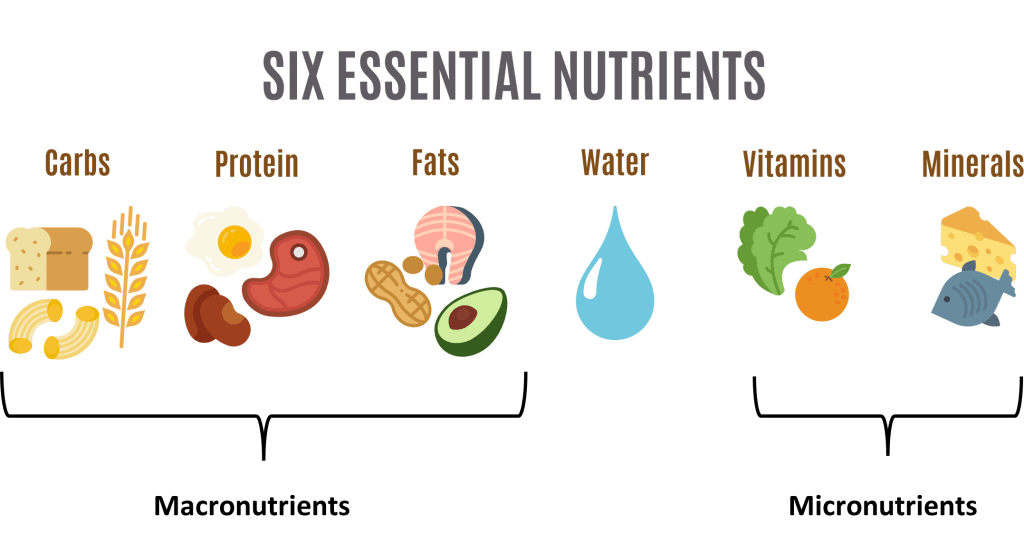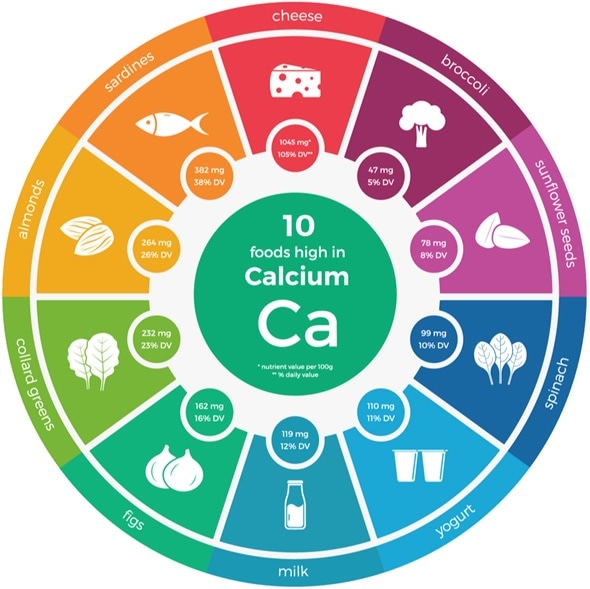Micronutrients----Nutrients and Minerals
Presentation
Micronutrients are fundamental components expected by the body in minute amounts for a scope of physiological and biochemical cycles that support life. These supplements are overwhelmingly arranged into two classes: nutrients and minerals. Regardless of their need in limited quantities, their job in keeping up with by and large wellbeing and it is tremendous to forestall illnesses. A lack in either nutrients or minerals can prompt different unexpected problems, going from minor to perilous circumstances. This exposition means to give an exhaustive outline of the kinds of nutrients and minerals, their capabilities, sources, and the effect of their lack on human wellbeing.
Nutrients
Nutrients are natural mixtures that the human body needs for ordinary metabolic capabilities yet can't blend in adequate amounts. They should accordingly be acquired through the eating regimen. Nutrients are by and large arranged into two gatherings in view of their dissolvability: fat-solvent and water-solvent nutrients.
Fat-Solvent Nutrients
Fat-solvent nutrients, as the name proposes, disintegrate in fat and are put away in body tissues. The four fat-solvent nutrients are A, D, E, and K.
1. Vitamin A:
Function: Vitamin An assumes a pivotal part in keeping up with solid vision, advancing resistant capability, and supporting proliferation. It is additionally significant for the appropriate working of the heart, lungs, kidneys, and different organs.
Sources: Normal dietary sources incorporate liver, fish oils, milk, eggs, and orange or yellow vegetables like carrots, yams, and pumpkins.
Deficiency: An absence of vitamin A can bring about night visual impairment and an expanded gamble of irresistible illnesses, especially in kids. Serious inadequacy can prompt xerophthalmia, a condition that can cause visual deficiency.
2. Vitamin D:
Function: Vitamin D is critical for calcium retention, which is important for keeping up with bone wellbeing and strength. It likewise upholds safe capability and assumes a part in decreasing irritation.
Sources: The essential wellspring of vitamin D is daylight openness, however it can likewise be found in strengthened food varieties like milk, as well as in greasy fish like salmon and mackerel.
Deficiency: Vitamin D lack can prompt rickets in youngsters and osteomalacia or osteoporosis in grown-ups. It has likewise been connected to expanded dangers of persistent infections like cardiovascular illnesses and certain diseases.
3. Vitamin E:
Function: Vitamin E goes about as a cancer prevention agent, shielding cells from harm brought about by free revolutionaries. It likewise upholds invulnerable capability and skin wellbeing.
Sources: Food sources plentiful in vitamin E incorporate nuts, seeds, spinach, and vegetable oils.
Deficiency: A lack in vitamin E is uncommon however can bring about nerve and muscle harm, prompting muscle shortcoming and vision issues.
4. Vitamin K:
Function: Vitamin K is fundamental for blood coagulating and bone digestion. It enacts proteins that assist with blooding coagulate and those that are engaged with bone structure.
Sources: Verdant green vegetables like spinach, kale, and broccoli are plentiful in vitamin K. Different sources incorporate fish, meat, and eggs.
Deficiency: A lack in vitamin K can prompt over the top draining because of hindered blood coagulating. In babies, it can cause hemorrhagic illness.
Water-Solvent Nutrients
Water-solvent nutrients break down in water and are not put away in that frame of mind in the body, meaning they should be polished off consistently. The significant water-dissolvable nutrients incorporate the B-complex nutrients and L-ascorbic acid.
1. Vitamin B-complex:
The B-complex gathering comprises of eight particular nutrients, each with its particular capabilities:
B1 (Thiamine): Significant for energy digestion and nerve capability.
B2 (Riboflavin): Associated with energy creation and skin wellbeing.
B3 (Niacin): Assumes a part in DNA fix and keeping up with solid skin and nerves.
B5 (Pantothenic Acid): Important for the union of coenzyme A, which is engaged with unsaturated fat digestion.
B6 (Pyridoxine): Fundamental for protein digestion, red platelet creation, and the making of synapses.
B7 (Biotin): Significant for carb, fat, and protein digestion.
B9 (Folate): Pivotal for DNA union and cell division, making it particularly significant during pregnancy.
B12 (Cobalamin): Fundamental for red platelet arrangement and neurological capability.
Sources: The B nutrients are ordinarily tracked down in entire grains, eggs, meat, poultry, fish, and verdant green vegetables. Folate is likewise tracked down in vegetables and strengthened grains.
Deficiency: Lack in B nutrients can prompt different medical issues. For instance, an absence of B12 can cause malignant pallor and neurological issues, while a lack in folate during pregnancy can prompt brain tube surrenders in the hatchling.
2. Vitamin C (Ascorbic Acid):
Function: L-ascorbic acid is fundamental for the combination of collagen, wound recuperating, and the support of ligament, bones, and teeth. It likewise works as a cancer prevention agent and works on iron ingestion from plant-based food varieties.
Sources: Citrus natural products, strawberries, ringer peppers, and broccoli are plentiful in L-ascorbic acid.
Deficiency: Scurvy, described by paleness, gum sickness, and skin issues, is a consequence of serious L-ascorbic acid insufficiency.
Minerals
Minerals are inorganic components that the body needs for different physiological cycles, including building bones, making chemicals, and directing the heartbeat. Like nutrients, minerals are arranged into two gatherings: macro minerals and minor elements, contingent upon the amounts expected by the body.
Macro minerals
Macro minerals are required in bigger sums contrasted with minor elements. They incorporate calcium, phosphorus, magnesium, sodium, potassium, chloride, and sulfur.
1. Calcium:
Function: Calcium is fundamental for the development and upkeep of solid bones and teeth. It is additionally engaged with muscle capability, nerve transmission, and blood thickening.
Sources: Dairy items, verdant green vegetables, sustained plant-based milks, and tofu are wealthy in calcium.
Deficiency: A lack in calcium can prompt frail bones, expanding the gamble of osteoporosis and cracks. In kids, it can cause hindered development and formative issues.
2. Phosphorus:
Function: Phosphorus works intimately with calcium to assemble solid bones and teeth. It is additionally engaged with energy creation and the arrangement of cell films.
Sources: Meat, dairy, fish, and vegetables are great wellsprings of phosphorus.
Deficiency: Lack is intriguing however can prompt muscle shortcoming, respiratory issues, and bone agony.
3. Magnesium:
Function: Magnesium is associated with north of 300 biochemical responses in the body, including energy creation, protein union, and muscle and nerve capability.
Sources: Entire grains, salad greens, nuts, seeds, and vegetables are great wellsprings of magnesium.
Deficiency: Magnesium lack can cause muscle cramps, mental issues, and heart issues.
4. Sodium and Potassium:
Function: Both sodium and potassium are electrolytes that direct liquid equilibrium, muscle constrictions, and nerve signals.
Sources: Sodium is usually seen as in salt, while potassium is plentiful in natural products like bananas, vegetables, and vegetables.
Deficiency: Sodium inadequacy (hyponatremia) can prompt migraines, weariness, and disarray. Potassium lack (hypokalemia) can cause shortcoming, weariness, and muscle cramps.
Minor elements
Minor elements are required in a lot more modest sums however are similarly significant. Key minor elements incorporate iron, zinc, iodine, selenium, copper, manganese, and fluoride.
1. Iron:
Function: Iron is a critical part of hemoglobin, which transports oxygen in the blood. It is additionally significant for energy digestion.
Sources: Red meat, beans, lentils, and strengthened cereals are great wellsprings of iron.
Deficiency: Iron inadequacy is perhaps of the most widely recognized supplement lack around the world, prompting sickliness, described by exhaustion, shortcoming, and fair skin.
2. Zinc:
Function: Zinc upholds resistant capability, wound mending, and DNA union.
Sources: Meat, shellfish, vegetables, seeds, and nuts are wealthy in zinc.
Deficiency: A lack in zinc can bring about debilitated safe reaction, going bald, and postponed wound mending.
3. Iodine:
Function: Iodine is fundamental for the creation of thyroid chemicals, which control digestion, development, and improvement.
Sources: Iodized salt, dairy, and fish are normal sources.
Deficiency: Iodine lack can cause goiter (extended thyroid organ) and formative issues in kids.
End
Nutrients and minerals, regardless of being expected in modest quantities, are basic to keeping up with wellbeing and forestalling sicknesses. A decent eating regimen wealthy in natural products, vegetables, entire grains, lean proteins, and dairy items for the most part gives adequate levels of these micronutrients. Notwithstanding, in specific populaces or under unambiguous circumstances, supplementation might be important to stay away from lacks and guarantee ideal wellbeing. Figuring out the job of micronutrients and guaranteeing satisfactory admission is critical to advancing long haul prosperity and essentialness.




0 Comments